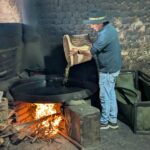As promised in my post about personal safety in urban locations in South America, here’s one about how you can stay safe in the backcountry. Like the “Three B’s,” the “Three Knows” are based on my personal experiences. Unlike the Three B’s, which are actions to take during your trip, the “Knows” focus on preparing before the trip. Prior preparation prevents poor performance or, in this case, personal illness or injury.
Three “Knows” For Personal Safety in the Backcountry
Know Yourself
Know Yourself is the most important personal safety tip in my book. You need to think about how much you really want to see that bird or ruin or mountain top. Are you willing to endure tough terrain or bad weather to meet that goal? Are you physically able to meet those challenges? Finally, how much personal risk are you willing to accept to meet your goal? If, like me, you are fairly risk averse, you probably don’t want to book that bike ride down the “highway of death” in spite of that great price.
Know the destination
Warm and sunny to bitter cold and rainy… sounds like a typical day in Quito. Weather in the Ecuadorian Andes can be a challenge to prepare for given its varied climates. It’s common to have a 40-degree temperature change following a 30-minute flight, a two-hour bus ride or a three mile walk. If you aren’t ready for the weather, there can be significant health dangers, especially when combined with high altitude. This is where Not Your Average American provides our biggest service: linking our customers with local guides and articles like Hiking to the Refugio at Cotopaxi National Park so you know what to expect.
Know when to “knock it off”
It’s easy to get totally wrapped up in a travel experience. In fact, for me, that is my goal. But it’s also vital to be aware of what’s going on around you and when to “knock it off.” In the Air Force, that’s the signal during a flying exercise that something is going wrong and for all involved to stop what they’re doing. It makes a lot of sense when dealing with an aircraft moving hundreds of miles per hour.
In order recognize when to “knock it off,” you need to know what “bad” looks like. So time spent before your trip reading up on altitude sickness, what to do during an earthquake, or basic backcountry first aid training is time very well spent. It’s especially key when lightning starts hitting the mountaintop or your body starts sending you signals that its under stress. Those few moments of preparation back home can prevent bad things happening in the backcountry.














0 Comments